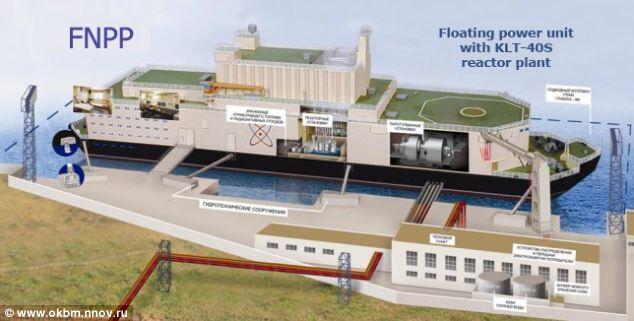
Nuclear at Sea: Floating Reactors
As the world demand for energy heats up, some in the nuclear industry are looking to the world’s oceans to provide sites for the next generation of power plants.
In January, China General Nuclear (CGN) announced an agreement with the Chinese shipbuilding industry to develop a floating nuclear power plant designed to supply electricity, heat and desalination of water and could be used on islands or in coastal areas, or for offshore oil and gas exploration. The plant is expected to begin power generation by 2020.
Russia, meanwhile, expects its floating nuclear plant to start powering the Arctic this year.

Courtesy: www.okbm.nnov.ru
Scientists at Massachusetts Institute of Technology (MIT) are working on power plants that can be assembled in a shipyard and then docked at sea.
Professor Jacopo Buongiorno, the associate head of nuclear science and engineering at MIT and the director, Center for Advanced Nuclear Energy Systems (CANES), has been spearheading the project for two years.
“The idea is to integrate a nuclear reactor into a floating platform like the type used for oil and gas operations,” according to Buongiorno.
A whole plant, including the turbine and generator, would be built in a shipyard and then anchored a few miles offshore.
For the MIT team, floating reactors are the latest advancement in the field of nuclear technology.
“Economically, you can simplify the design and build it all in one place so you can build it faster,” says Buongiorno. They are more compact, so the amount of materials required for the construction would be less also keeping costs down.
With reactors out at sea, the threat of damage from weather events would be minimized. Waves from destructive storms are smaller out at sea than at the coastline. Also, having a nuclear power plant out at sea would mean a continuous supply of coolant.
“The reactor is under the water line so it becomes easy to use the ocean as a heat sink,” according to Dr. Buongiorno. “The heat exchanger discharges the heat into the ocean so you can’t run out of cooling.”
The group at MIT has a crowdsourcing page to help with the development of their power plant.
While the first floating power plant for this group of MIT researchers is still in the developing stages, Dr. Buongiorno and his team believe they can develop a new wave of floating nuclear plants that would be safe and cost effective in a variety of new applications.


